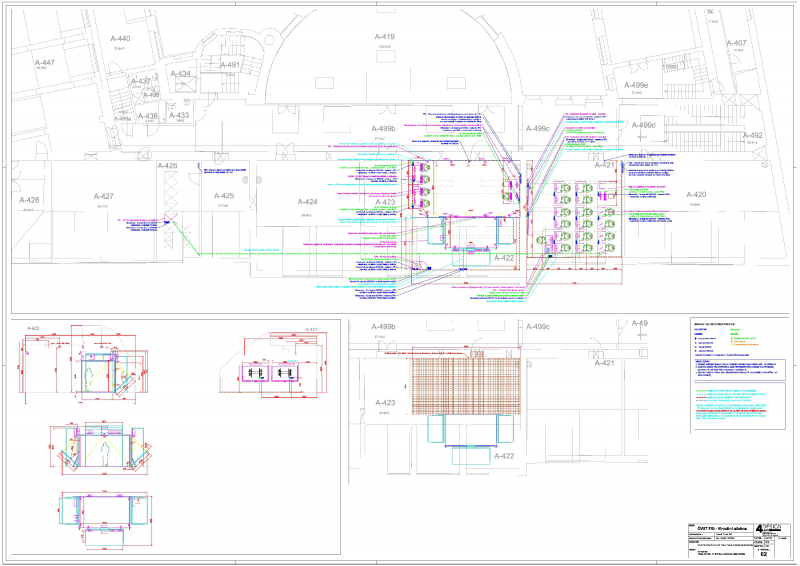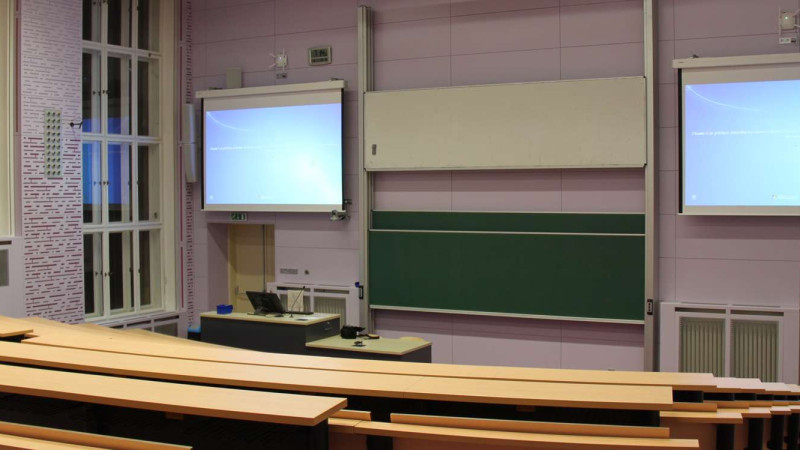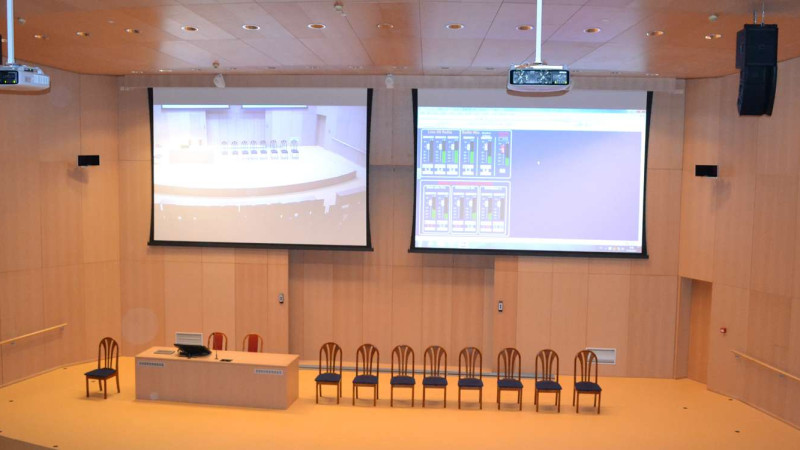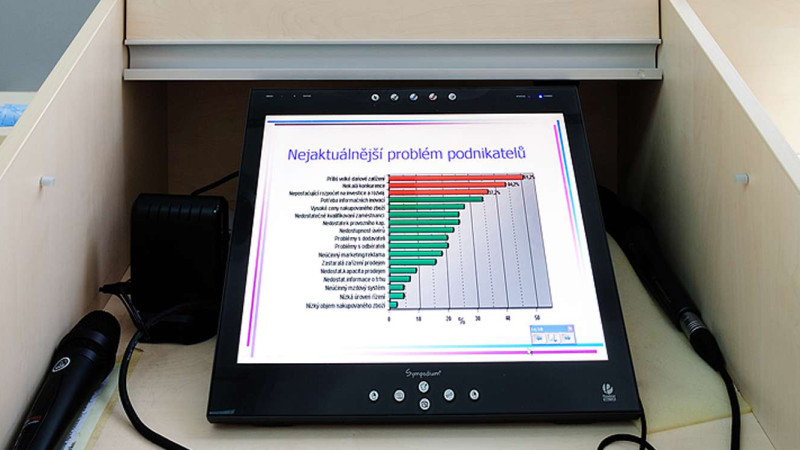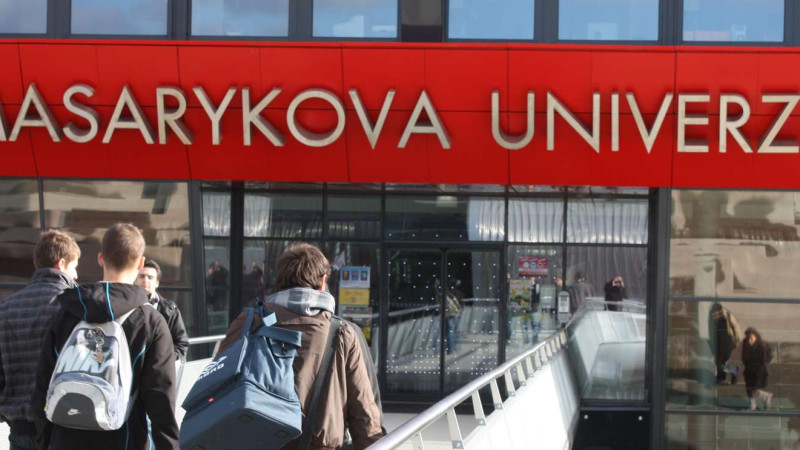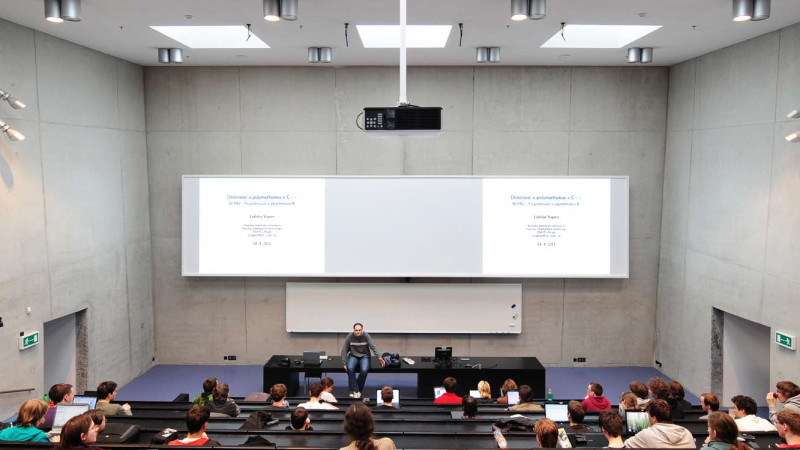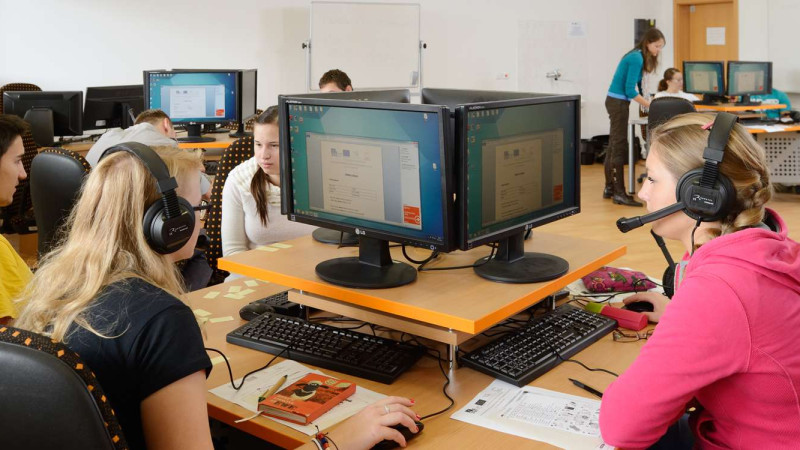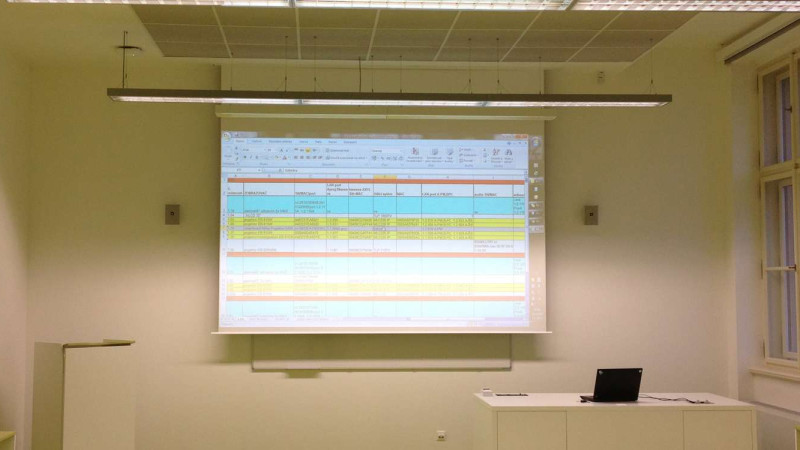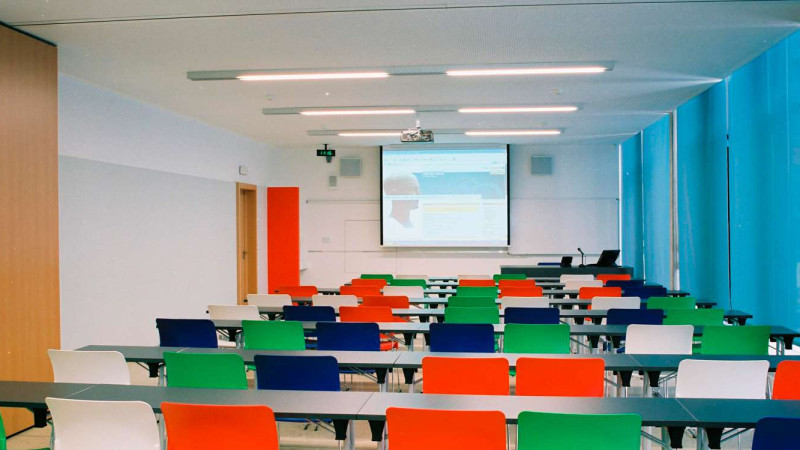
It all starts with a quality project
Every modern space has to meet the today´s requirements, not only in terms of new design trends, but above all from the user's point of view.
When designing, you need to consider why and for what purpose the space will be used. This is the only way to design the most suitable fully functional audiovisual and acoustic solution for you. This is no different in the new upcoming Czech Technical University classrooms for virtual learning.
There will be two classrooms, one of which will be used for frontal teaching and the other special classroom will be equipped with the 3D Cave technology.
Another challenge will be new technologies that are not directly tested and need to be properly plotted and wired so that there are no pitfalls during implementation.
The project includes, of course, common LAN wiring and active LAN technology, common power distribution, cable routes, and a server room.
ROOM FOR FRONTAL TEACHING
The front wall of the room will house two central interactive displays with a minimum image diagonal of 80" and 4K resolution. Control of the displays will be by finger, palm or stylus touch. The delivery of the interactive display includes a software package for the preparation of interactive exercises. The sound system will be implemented with 2 active soundbars placed above the displays.
The room will also be equipped with tables with 16 workstations specifically designed for 3D learning and working with 3D objects.
The classroom is adapted for hands-on practising and group learning. Each student has an acquisition device and a touch layer with a precision stylus on his/her desk. The equipment also includes a 3D scanning system, which, with the help of a calibrated camera and photogrammetric software, enables the measurement and 3D scanning of spatial objects, and at the same time the system can also be used for image transmission to the frontal displays. The workstations are additionally equipped with virtual reality glasses (Windows Mixed Reality type) for fully immersive learning experience in individual workstations.
Using special controllers, each student has the ability to navigate through the embedded virtual 3D space or view 3D objects. Optionally, the teacher can switch the output of the software to one of the front-facing displays at any time.
ROOM WITH THE 3D CAVE
3D cave will be located in the classroom area. The cave structure consists of metal/aluminium profiles on which projection surfaces suitable for displaying 3D content in high resolution are installed. The entire structure is anchored into the floor.
The projectors designed for simultaneous projection of 3D images onto the projection surfaces and the floor will be fitted with a short throw lens. At the same time, 6 tracking cameras will be suspended on the cave structure to track the movement of a person inside the cave and an IR transmitter for 3D glasses and sound system.
A control system consisting of a control unit and a touch panel located at the control station next to the cave will be used to control the AV technology related to the 3D cave.
The 3D CAVE space is used for displaying and verifying virtual prototypes. Due to the spatial arrangement, we can compare actual physical parts of the components with the virtual prototype in this space. Practically, the space is equipped with a set of synchronous active projectors and a tracking system for the virtual aids and 3D glasses of the participants. One participant with active glasses moves in the space, while the 3D display of all projectors adapts to his current position and view. The overall impression is that the scene fully surrounds the participant (he/she is immersed in the space). Using virtual wireless tools, the user can manipulate selected 3D scene objects and perform annotation of virtual 3D objects, their cuts and virtual measurements. Multiple participants can move in the CAVE space, but only the one wearing the glasses with the tracking target (the tracked object on the glasses) has an ideal view of the scene.
The software corresponds to the described purposes, i.e. each projector contains a software system for displaying the 3D scene (rendering node), which is synchronized and controlled by a central software on the main computer (master node).
ROOM WITH TRACKING CAMERAS AND BACKPACKS
The free space in front of the CAVE system is designed for fully immersive learning experience and prototype virtualization. It is a cooperative virtual reality environment allowing, among other things, physical movement and exploration of and interaction with virtual 3D scenes. Users have special powerful mobile workstations placed in “backpacks” on their backs, connected to virtual reality glasses (called HMDs - Head Mounted Displays). This system is designed for multiple users at the same time; in our case the workstation is designed for a total of 4 people cooperating at the same time. Special backpacks (VRBackpacks) allow free movement, while thanks to the tracking cameras the participants can “see” each other also in the virtual space where they share the same scene.
The image of other participants in a totally immersive environment prevents physical collisions and at the same time makes mutual cooperation possible. Inside the virtual space, it is possible to point at the 3D model in the virtual scene, annotate selected parts of it, handle the selected objects, make virtual measurements (dimensions) and virtual sections of 3D objects.
VRBackpacks are versatile computing units that can be used not only in the tracked (tracking) space.
The way of working inside this space is known as “experience reality” (xR) and combines the principles of virtual reality, total immersion and cooperative working, such as video conferencing.















